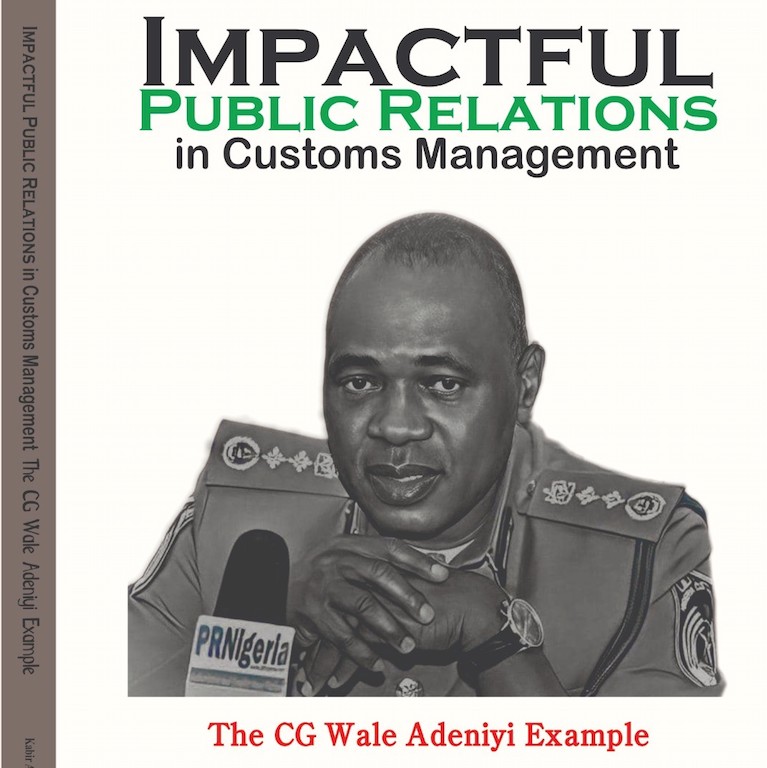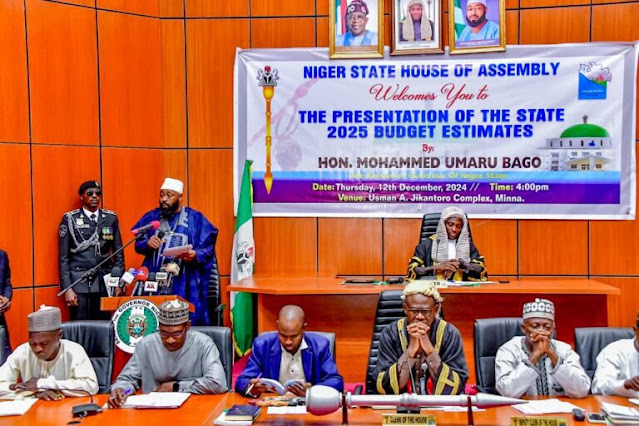BY BILKISU AHMED SHEKARAU

The book “Impactful Public Relations in Customs Management” by Kabir Abdulsalam and Maryam Umar Na’Allah serves as a practical guide to PR strategies and communication.
It is a valuable resource for public relations professionals, customs officials, and anyone interested in the field of strategic communication.
The book enhances understanding of PR strategies through reality-based examples, making it engaging, educative, and informative while highlighting the vital influence of public relations in customs management.
Kabir Abdulsalam, born in 1986, is a senior staff writer at Image Merchants Promotion Limited and an associate member of the Nigerian Institute of Public Relations (NIPR). His co-author, Maryam Umar, born in 1996, is also a staff writer at the same organisation and an associate member of the NIPR.
Together, they present a 12-Chapter manuscript that explores key PR communication tools in customs management, including event management, lobbying, press releases, and more. This review focuses on press releases and their various writing styles.
Chapter 3 of the book underscores writing as a critical skill in public relations. Beyond being a top-tier factor in PR, writing is the medium through which messages are most effectively conveyed. Practitioners may use press releases, newsletters, website content, or media pitches to engage audiences. Clarity and conciseness are crucial, to avoid ambiguity and jargon, since messages must be understood and trusted by their target audiences. The Nigerian Customs Service (NCS) has successfully employed these methods to reach the public and promote its objectives.
The book defines a press release as a newsworthy announcement that provides meaningful information on a particular event or as a written official statement distributed to media outlets for publication. In simpler terms, it is a tool used to promote goodwill or mitigate crises.
The inverted pyramid structure and the “5Ws and H” technique remain essential frameworks for crafting effective press releases, allowing PR practitioners to simplify complex information for public consumption.
According to the book, PRNigeria observed that many of the NCS’s achievements have been communicated through well-constructed press releases.
During the first 100 days of (Acting) Comptroller General Wale Adeniyi, press releases were consistently deployed to announce new programmes, appointments, partnerships, and collaborations. This established the press release as a tool for endorsing the Customs Service’s corporate brand.
Customs spokesperson Abdullahi Maiwada has also played a crucial role by issuing releases before and after significant events such as seminars, conferences, and official visits. His approach demonstrates the value of structured communication in strengthening institutional credibility.
The book highlights three notable writing styles in PR: speech writing, rejoinders, and feature/opinion writing. In speech writing, CGC Adeniyi often uses speeches not only to address audiences but also to ensure messages resonate with both the media and the public. His style blends engaging narratives with anecdotes and personal stories, making communication more relatable and effective. An impactful PR approach, the authors argue, requires innovation, influence, and trustworthiness.
Rejoinders, though less frequently used in Customs, are crucial when countering false information, inaccurate assumptions, or damaging rumours. When properly crafted, they clarify issues and restore public confidence. This is an essential defensive tool for any institution faced with misinformation in the digital age.
Feature and opinion writing, on the other hand, are more reflective and exploratory. Features provide researched insights and updates, while opinion pieces present subjective perspectives that encourage dialogue. These formats allow PR professionals to shape public discourse, highlight institutional goals, and influence narratives in newspapers, magazines, and online platforms. Effective opinion writing requires creativity, precision, and the ability to stimulate thought or provoke response.
The chapter concludes with practical tips for crafting impactful press releases: build strong media contacts, identify a newsworthy angle, ensure accuracy, provide background information, and construct content that is both appealing and informative. These elements, when combined, enable institutions to communicate effectively, manage crises, and promote their objectives.
Ultimately, the Impactful Public Relations in Customs Management book demonstrates how tools like press releases remain central to strategic communication.
Beyond being announcements, they are instruments for shaping reputation, managing crises, and building trust between institutions and the public.
Bilkisu Ahmed Shekarau is a student of Mass Communication at Nile University, Abuja. Email: bashekarau@gmail.com








